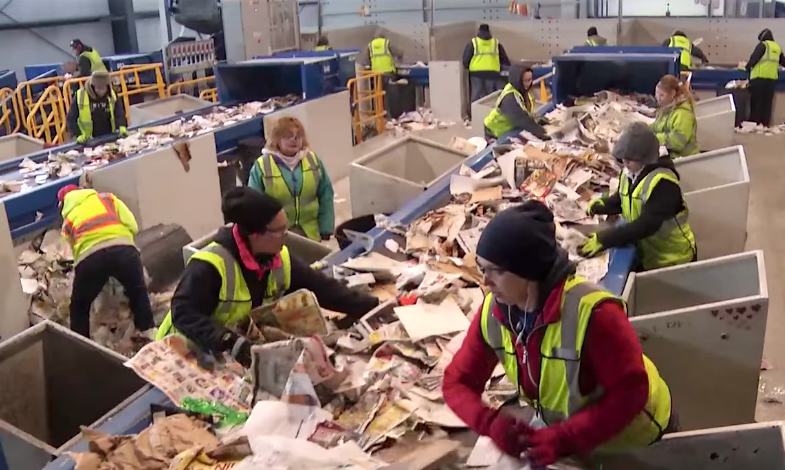Recycling Update: The China Factor
In 2017 China abruptly stopped importing nearly all recycled waste, disrupting recycling programs across the United States. The news media carried numerous reports of recycled paper, plastics and glass piling up in many communities because waste haulers were unable to find markets for the materials. People started to ask if recycling was still economically feasible.
“Recycling is not dead. It’s here to stay, and it’s important,” said Ben Harvey, president of the E.L. Harvey & Sons, the solid waste management contractor for UMass Chan Medical School and UMass Memorial Health Care.
Harvey said China’s decision to shut its doors to recycling from the United States did cause his company to stockpile some recycled material for nearly a year. At one point, Harvey had 6,000 tons of processed paper, bottles and plastics stored at its Westborough complex.
“It was a challenge, but we have since found markets for the material and we are moving it,” Harvey said. “Unlike some companies in other areas, we did not have to resort to landfilling any of the material. It is all still being recycled in one way or another.”
The big factor prompting China’s action was contamination of the recycled materials, principally the paper, Harvey said. Early on in many US recycling programs consumers were asked to separate their recyclable materials into dedicated collection bins. When recycling switched to “single stream” with everything being placed in the same bin, paper often got contaminated by liquids or food waste.

Also, the single stream change seems to have prompted many people to be more careless about what gets placed in the recycling bin. “We call it wish-cycling,” Harvey said. “People have something they don’t want to throw away and they figure we’ll find a way to recycle it. That’s not how it works.”
When single stream recycled materials are received at the Harvey processing plant they are sorted both by hand and by machines. (See video). Harvey said they have pulled bowling balls, garden hoses, even soiled baby diapers out of the recycling stream. “Not sure what people are thinking with the diapers,” he quipped.
Harvey said they are now working with companies in Vietnam and India that are accepting paper and cardboard that meets industry specifications for contamination (not the overly strict China standard). Those companies process the material into pulp fiber which is then purchased by companies in China. Also, several Chinese companies have bought long-vacant paper mills in the United States and plan to re-open them to process recycled paper and cardboard then ship the pulp fiber back to China, Harvey said.
“China still needs the fiber to make the paper and cardboard they need for packaging everything they manufacture and export. They just will be getting the fiber through other channels,” Harvey said.
While thankful to have developed new outlets for the paper, Harvey said the costs have shifted significantly. “Rather than selling the material, we now have to pay people to take it. The cost for us is mostly in the transportation.”
Aluminum cans are the most valuable recycled commodity, Harvey said, while glass bottles are now the least desirable. “Many companies are moving away from glass bottles and using plastics,” Harvey said. “Plus, glass is much heavier, so it costs more to ship, then you have to deal with breakage.”
In spite of the China factor and shifting costs, recycling material back into industrial supply chains is ultimately more economical and better for the environment than sending it to landfills and using virgin resources to make new materials, Harvey noted.
As for the impact on people’s behavior at the medical school or clinical locations, Harvey asks everyone to continue recycling and also to pay close attention to what materials are acceptable. Plastic bags and flexible plastic packages, like wrappers on small products, are not acceptable, as they damage sorting machines.
“We have a very good, successful program with UMass. Suzanne Wood and the team there do a great job,” Harvey said. “But we can always to better. It’s all about education, education, education.”
